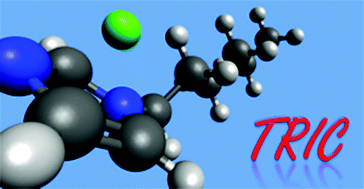Towards designing environmentally safe ionic liquids: the influence of the cation structure†
Abstract
Ionic liquids (ILs) are considered to be excellent alternatives to organic solvents, and are commonly used nowadays. However, introducing new classes of compounds always comes with the possibility of environmental threat and health issues they may induce. This work was aimed at examining which structural features of ILs are responsible for their toxicity. There are examples of structure–activity relationship models for ILs in the literature. However, in our approach, we have analysed this issue globally for a wide range of ionic liquids and their toxicity was measured by multiple toxicological tests (multiple endpoints). We have collected the experimentally measured available literature data on the toxicity of ILs for various organisms. Then, by employing Principle Component Analysis (PCA), we examined the structural similarity of 375 different ionic liquids having six different types of cations (namely imidazolium, ammonium, phosphinium, pyridinium, pyrolidinium and sulfonium). For expressing the structural features of studied ILs we used Weighted Holistic Invariant Molecular (WHIM) descriptors, calculated for cations and anions separately. The geometry of each structure was optimized at the level of the semi-empirical PM7 method. The toxicological response was thereafter analyzed in the space of the first and second principle components. We pointed out that for most of the tested cases there is a strong relationship between the variance in the observed toxicity and the cations’ descriptors. We also proved the anions’ influence on the IL toxicity to be less meaningful. After repeating PCA using only the cations’ descriptors, we proved that the toxicity of ILs against selected targets depends mostly on the size and branching of the cation. On this basis, we have proposed a Toxicity Ranking Index based on the structural similarity of Cations (TRIC) for the initial toxicity screening studies of ILs. It should be mentioned however that the use of TRIC is limited to the prediction of toxicity endpoints used in its development. The use of TRIC as a preliminary toxicity indicator would provide a general view on ILs’ toxicological potential and its predictions may provide valuable conclusions, which, taken under consideration, may help in simplifying the procedure of designing new greener and safer ionic liquids in future.


 Please wait while we load your content...
Please wait while we load your content...